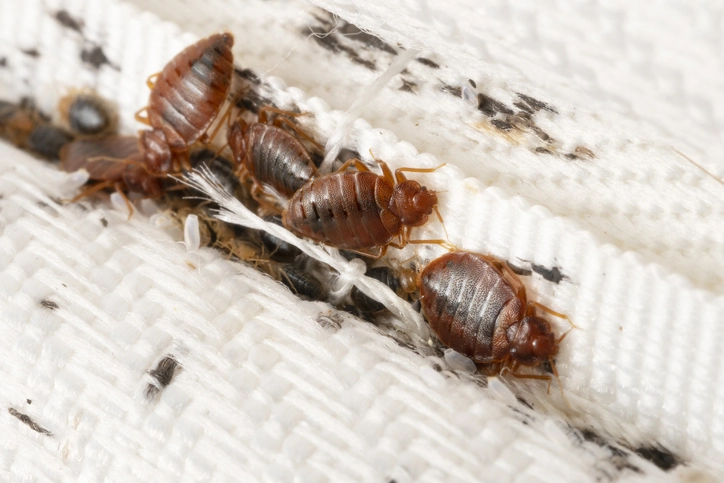Affordable A1 Bed Bug Removal in Houston - Specialist Exterminators
Affordable A1 Bed Bug Removal in Houston - Specialist Exterminators
Blog Article
Recognizing the Lifecycle of Bugs for Targeted Control Methods
Recognizing the lifecycle of parasites is an essential aspect of effective parasite administration strategies. By understanding the different stages of growth that pests undergo, a much more exact and targeted approach can be embraced to control their populaces. This expertise not just drops light on the vulnerabilities within the bug lifecycle however likewise paves the means for implementing tactical measures that can interrupt their development and reproduction cycles. Through a deeper understanding of just how pests flourish and develop, tailored control strategies can be designed to address specific points in their lifecycle, eventually bring about more effective insect management results.
Significance of Understanding Parasite Lifecycle
Recognizing the lifecycle of parasites is crucial for creating reliable and targeted control techniques in parasite management. By understanding the different stages a parasite goes with from egg to grownup, pest control experts can identify prone points in the lifecycle where intervention can be most effective.
Additionally, acknowledging the specific ecological conditions essential for each and every stage of the insect's lifecycle can lead choices on habitat modification or exemption methods to decrease and interrupt the lifecycle parasite populations. This understanding makes it possible for pest monitoring professionals to execute proactive actions instead than depending solely on responsive therapies, bring about more long-lasting and sustainable parasite control remedies. Inevitably, a thorough understanding of parasite lifecycles encourages insect control specialists to tailor their techniques effectively, minimizing ecological effects and maximizing control results.
Key Phases in Bug Advancement
To properly execute targeted control techniques in pest administration, an important element exists in adequately identifying and recognizing the essential phases in insect growth. Insect advancement normally is composed of several crucial stages that are crucial for their lifecycle and monitoring.

Vulnerabilities in Pest Lifecycle
Throughout the numerous stages of a parasite's lifecycle, unique susceptabilities emerge that can be purposefully targeted for effective control actions. One essential susceptability lies in the egg stage, where pests are commonly much more susceptible to particular insecticides or organic control agents due to their soft outer covering, making them much easier targets for intervention. In addition, the nymph or larval stage presents susceptabilities as bugs go through quick growth and growth, needing high energy usage that can be manipulated by disrupting their food resources or introducing growth preventions. Pupal phases, characterized by stability and makeover, use a window for targeted control through physical obstacles or details treatments that hinder successful introduction. Lastly, adult parasites, while much more resilient because of their reproductive capability, can still be vulnerable during mating or egg-laying tasks, which can be disrupted through scent traps or sterilization methods. Comprehending these susceptabilities in the parasite lifecycle is crucial for establishing specific and effective control techniques that efficiently handle pest populaces while minimizing ecological impact.
Carrying Out Targeted Control Steps

Executing targeted control actions generally includes a multi-faceted strategy. This may consist of habitat modification to make the atmosphere less welcoming to insects, such as getting rid of standing water for mosquito control or securing entrance points for rats. Additionally, organic control methods can be made use of, where all-natural predators or pathogens are presented to maintain bug populations in check.
Integrated Insect Management (IPM) methods that incorporate various control actions in a coordinated and sustainable way are usually the most efficient in achieving find more long-term insect administration objectives. By applying targeted control steps based on a comprehensive understanding of insect lifecycles, pest populaces can be successfully controlled while lessening risks to human health and the environment.
Improved Parasite Management Practices

Furthermore, the unification of organic control agents, such as all-natural predators or pathogens of parasites, can help in reducing reliance on chemical pesticides and advertise a more well balanced environment. Implementing physical obstacles and catches can additionally be part of enhanced insect administration methods, supplying non-toxic and targeted services for bug control. In addition, the use of pheromones and other semiochemicals can interfere with pest breeding patterns and communication, resulting in minimized parasite populaces with time.
Final Thought
By recognizing vital phases in pest development and vulnerabilities in their lifecycle, targeted control measures can be implemented to minimize pest populations. Improved insect monitoring practices can help decrease the reliance on broad-spectrum pesticides and promote more environmentally friendly and sustainable bug control approaches.
Understanding the lifecycle of insects is vital for establishing reliable and targeted control techniques in bug management. By comprehending the different stages a bug goes via from egg to grownup, parasite control specialists can recognize vulnerable points in the lifecycle where intervention can be most successful. Eventually, an extensive understanding of bug lifecycles encourages insect control professionals to customize their methods properly, optimizing and lessening environmental effects control outcomes.
By implementing targeted control steps based on a comprehensive understanding of insect lifecycles, pest populaces can be efficiently controlled while minimizing dangers to human health and the setting.
By hop over to these guys identifying vital stages in insect check my blog growth and susceptabilities in their lifecycle, targeted control steps can be implemented to lessen insect populaces.
Report this page